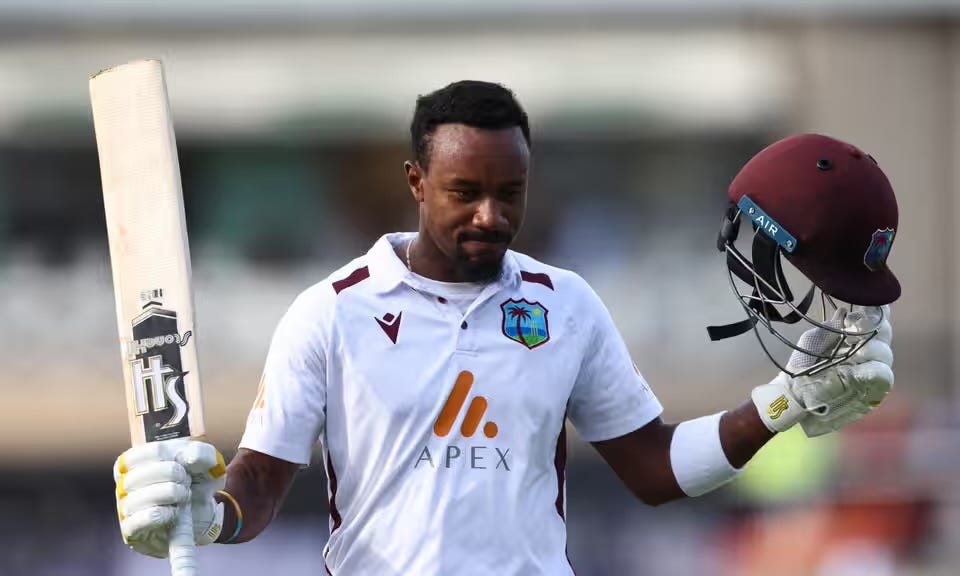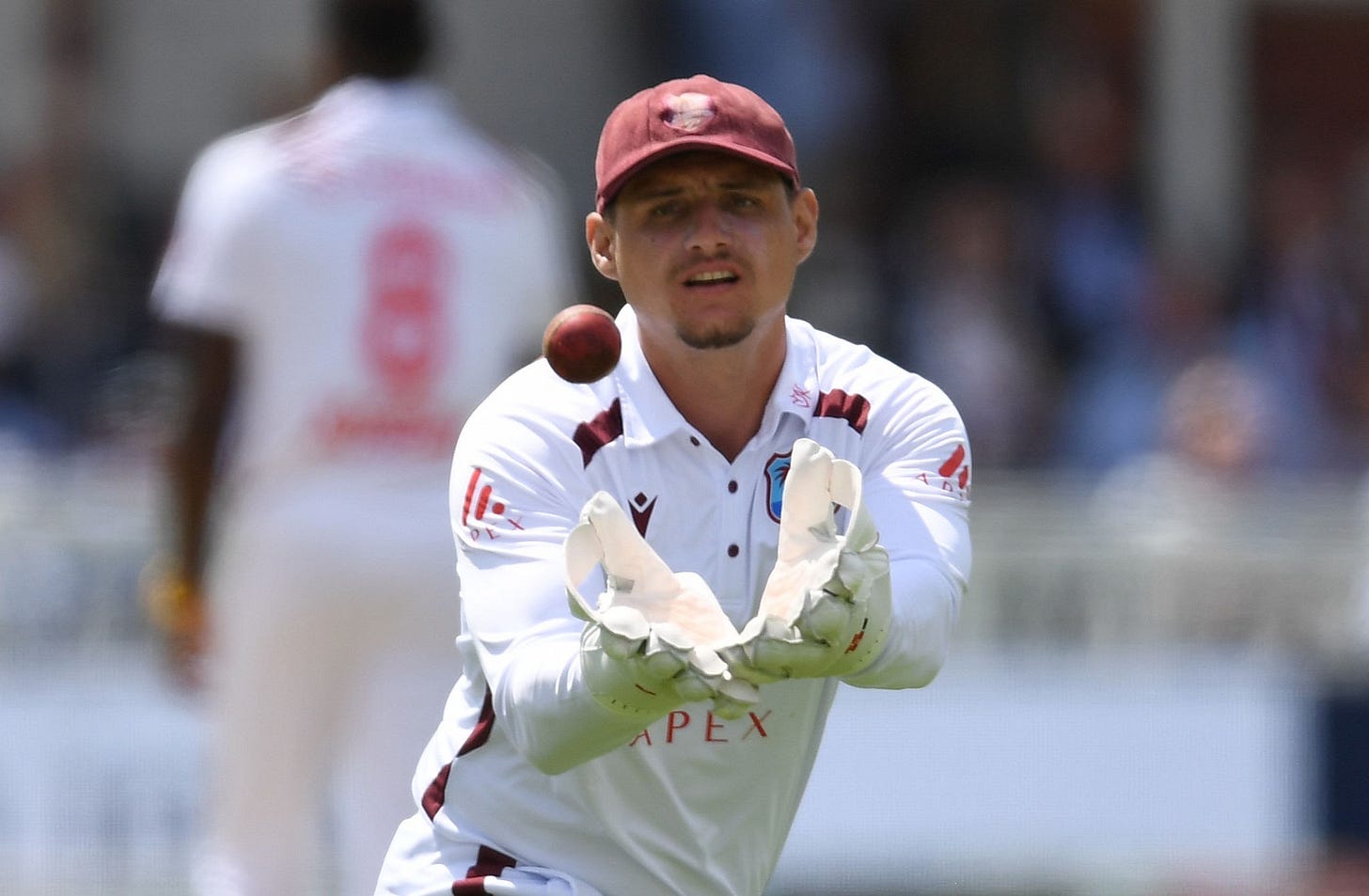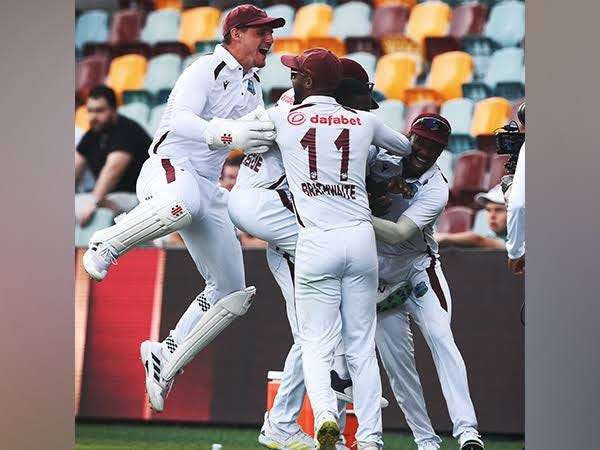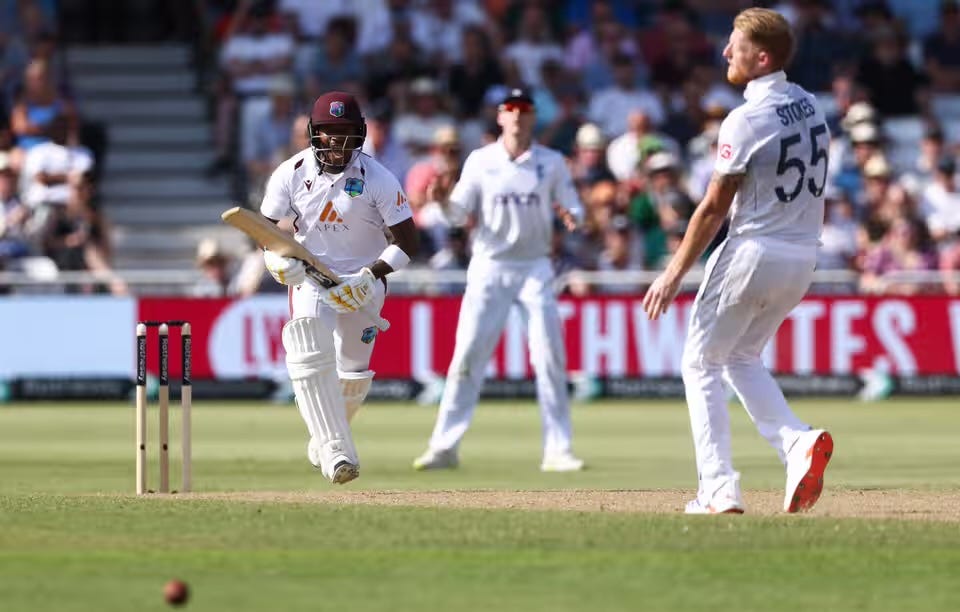Everything has a price, especially in sport. Anyone who says ‘you can’t put a price on that’ is either not trying hard enough or they’re being disingenuous. Or they’re not professional cricketers and probably don’t know any.
When Kavem Hodge raised his bat to acknowledge the standing ovation from a capacity crowd at Trent Bridge last week for his maiden Test century against England, there would have been some viewers believing the moment was priceless.
Actually, the 31-year-old knew the value of the moment better than anyone in the world. He’s been attaching a price to it for 12 years since making his first-class debut for the Windward Islands as a 19-year-old. He battled years of inconsistency, sparingly dotted with innings of substance.
He finally received his call-up to the West Indies Test team in Australia earlier this year and looked out of his depth in the first Test thrashing. When Joshua da Silva joined him at the crease in the second Test at the Gabba in Brisbane, the tourists were 64-5 and the eyes of onlookers were rolling again. Hodge made 71 and added 149 with the ‘keeper before Shamar Joseph bowled them to a famous, series-levelling victory.
Hodge knew exactly what that moment was worth, too. 12 years of toil playing 65 first-class games, never giving up on the dream. No desire to reinvent himself as a T20 specialist and earn himself some ‘proper gravy’ on the franchise circuit.
First-class cricketers aren’t paid well in the Caribbean – as little as $400 per game - and conditions can make the eyes water, on and off the field. Cricketers like Hodge count the cost, literally, every day. But there was something other than money driving him, and something which gave him the pleasure and sense of worth that everyone needs.
He’s far from alone. West Indies opener, Mikyle Louis, is just 23 with only nine first-class games worth of experience. But he was the leading run-scorer in the most recent domestic season with 682 at an average of almost 50. Kirk McKenzie (23) and Alick Athanaze (25) are young men with a care and passion for the game which extends beyond cash.
Jason Holder has represented a dozen T20 Franchise teams around the world including four in the IPL. When the former captain turned 29 he implied he had a year remaining in Test cricket: “I think 30 is a good time to start maximising earning potential,” he said. “My focus will change soon.” Yet there he was, at Lord’s and Trent Bridge, doing his best to hold things together with bat and ball a couple of months shy of his 33rd birthday.
There is nothing harder in Test cricket than bowling fast with no limit to your workload. Alzarri Joseph could so easily have walked away from it and opted for an easier, more lucrative career path. The 27-yeaar-old has played for seven different franchises and would not struggle for contracts. Jayden Seales is just 22-years-old and was so committed to making a success of the Test series that he played a month of first-class cricket for Sussex in the second division of the county championship in freezing April to help him acclimatise.
And then there is 24-year-old Shamar, the boy from the village of Baracara (population +-200) in the Guyana rainforest who famously said after that victory in Brisbane: “I will never walk away from Test cricket, no matter how much money they pay me.” Well, the Lucknow Super Giants paid him just over $350k to play in the IPL shortly after that but his love of Test cricket was uncompromised. He’s another young man who can put a price on things.
Caribbean cricketers like Nicholas Pooran and Romario Shepherd, who would undoubtedly have contended for a place in the Test team but who have opted for the easy, lucrative life, should not be criticised. They, too, have put a price on their careers. They know the financial worth of their services.
At the same time, cricketers who know, appreciate and seek a different kind of worth - along with less money for more work – should be respected and cherished. Instead, many are being alienated and made to feel like eccentric fools in the ‘culture’ of franchise leagues with its motto: ‘If you’re not making as much money as possible, as quickly as possible, then what are you doing?’
Test cricket is withering rapidly and soon there may only be half a dozen teams playing it beyond ‘exhibition’ status. It won’t be for a lack of willing players, it will be because of the undiminished greed of administrators and broadcasters, the vast majority of whom have only experienced first-class or Test cricket from a hospitality suite.
The imminent fate of Test cricket is no longer the greatest frustration. It has been overtaken by the inability or unwillingness of those who know best to speak up on cricket’s behalf because it is not like other businesses, or even other sports.







Given the state of test cricket, I fear that India and Pakistan have played their last test against each other.
It has been 17 years since they last played test cricket. A generation of players from both sides haven't played against each other in Lahore, Karachi, Mumbai, Kolkata, Chennai, Rawalpindi
Brilliant article.
I also love test cricket more than the other two formats. Miss those days when everyone went to play county cricket from April to September in England. Hope India does everything to keep test cricket alive especially playing smaller nations also